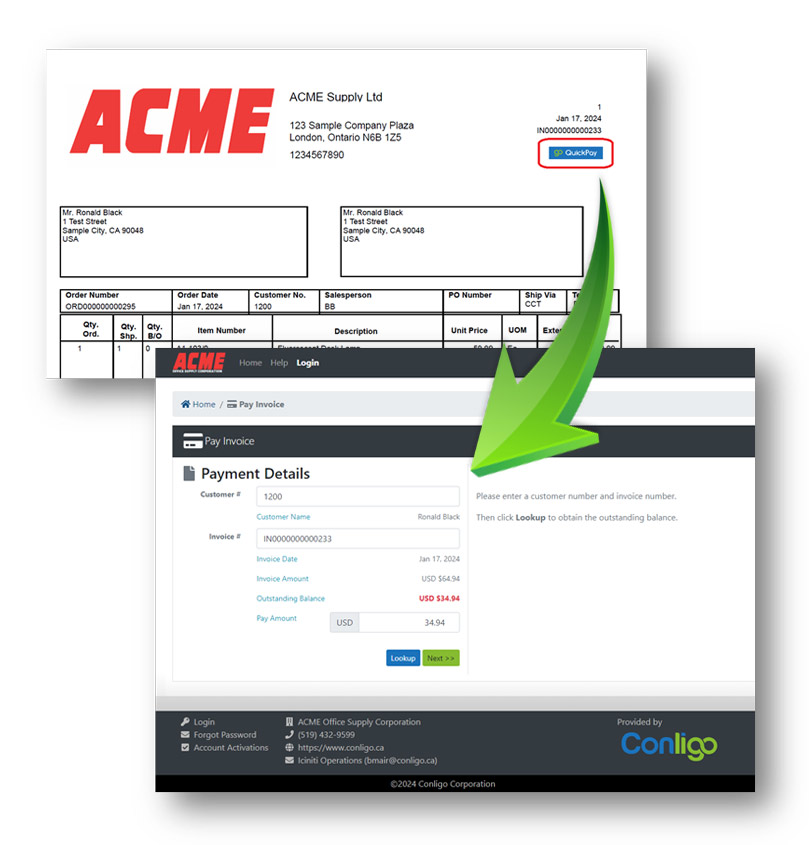The year is 2020, and it’s become very difficult for companies to justify continuing on without ERP integrated payments. This isn’t just the case for B2C commerce, but B2B too.
ERP payment integration refers to the authorization and capture of payments directly into a company’s ERP system. This can take place in different ERP screens, such as Order Entry or Accounts Receivable, but the general principle stays the same. This is all about making sure payments are captured and recorded in the very heart of a company’s accounting and inventory control.
As Toolbox.com reports, integrating payment processing with an ERP ends up making both solutions better. “Because payments increasingly are the primary touch point an enterprise has with consumers,” the report notes, “better integration of ERP and payments data becomes critical to improving both customer experiences and organizational efficiency.”
The Need for ERP integrated payments
It’s easy to argue that as a business scales, the need for seamless, durable, and frictionless payments becomes more essential. As the number of transactions climbs into the thousands, it becomes almost impossible for humans to keep up with the demands of manually entering payment information into the ERP. This isn’t to mention the burden of PCI compliance they take on, or the human toll of having people constantly enter all that data manually. On top of that, you also have to cope with human error, which can quickly cascade into much larger problems as a company grows.
But what about a small to medium-sized company that isn’t
really growing? Even in this case, it’s tough to argue that the cons of ERP integrated payments outweigh the pros. Some of these pros include the following:
1. Save time
While it might be tempting to continue using manual workarounds for getting data into a company’s ERP, many of these workarounds
aren’t actually PCI compliant, and they use up a lot of a company’s staff hours. Now, that data automatically appears in the ERP.
2. Improve your cash flow
You’ve got vendors, employees, taxes, and other costs to pay, so your business needs to have a clear, up-to-the-moment understanding of its cash flow. And no one likes long waits for invoice payments. ERP payment integration provides reliable, up-to-date reports on exactly how much money your business has available at the end of each business day, which helps you manage everything from payroll and inventory to paying vendors.
3. Reduce human error
Human beings make mistakes. It’s what we do. Having a person re-enter data always introduces the possibility of error, either in the form of entries being duplicated or data entered incorrectly or applied to the wrong account. This could bog a company down for hours trying to locate the error. It can also frustrate customers through overbilling, not having a payment properly attributed, or false tax reporting. The seamless flow of data into the ERP eliminates entry errors and provides confidence that accounts are accurate.
4. Reduce your labour costs
Integrating the payment process also eliminates the need to have a dedicated accounts receivable employee on payroll. You can also avoid paying an accountant for the sole purpose of re-entering data from credit card transactions to reconcile accounts. In addition, you can save time and money you might otherwise spend training employees due to the growing simplicity of the entire process of payment integration.
For these reasons and more, ERP integrated payments have become a competitive must-have for businesses both big and small. If you are interested in learning more about how integrated payments can help save your company a lot of time, money, and headaches, you can reach out to Conligo at sales@conligo.ca to learn more. We’d love to discuss how ERP integrated payments can help you move your business forward.


